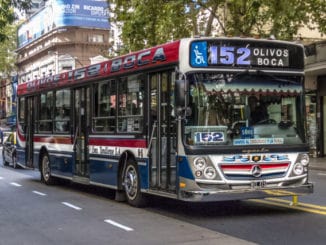
By John Monahan / Special to the Santiago Times
SANTIAGO — Living in Santiago, you come to appreciate some of the small design touches in the built environment: the murals by different artists in every metro station; the riverside sculpture park in Providencia; even the distinctive blue doors fronting the Banco de Chile branches, with their geometric windowpanes and sturdy brass handles.
One such element is more ubiquitous but less appreciated than all of them. Consider, for a moment, the humble sidewalk tile.
Where other cities have their glazed bricks or troweled carpets of cement, Santiago’s sidewalks are made of prefabricated concrete tiles. Square in shape, 30mm thick, with a diagonal grid of grooves for traction, they are designed to be installed quickly and replaced easily. Every day, millions of feet on thousands of streets walk upon these faithful tiles.
They are democratic: These tiles undergird all neighborhoods of the city, trod by muddy work boots in San Joaquin and polished wingtips in Las Condes alike. They are your last step before entering the cathedral or La Moneda; and your first step upon exiting a Domino or Big John. The same tiles surround the millionaire boutiques on Alonso de Córdova and the vegetable stalls of La Vega.
They are musical: Stepping on a loose tile produces a hollow woodblock “thunk” as it strikes the cement below. Several adjacent loose tiles can produce a sound effect like a Flintstone xylophone; an accidental marimba, played by passing feet. In a building where I once lived, you could tell whether an automobile was entering or exiting the underground garage from the order of the “notes” played under its wheels as it crossed the sidewalk.
They can even be mischievous: On one of Santiago’s rare rainy days, stepping on a loose tile is more likely to send a squirt of water up your trouser-leg than to play you a jaunty tune.
Santiago’s gridded tiles are not the canals of Venice or the tessellated beachfront mosaics of Rio. They are not a symbol of the city, but they are a fundamental part of it. They are modest, practical, and they keep a low profile – like many Santiaguinos themselves.



